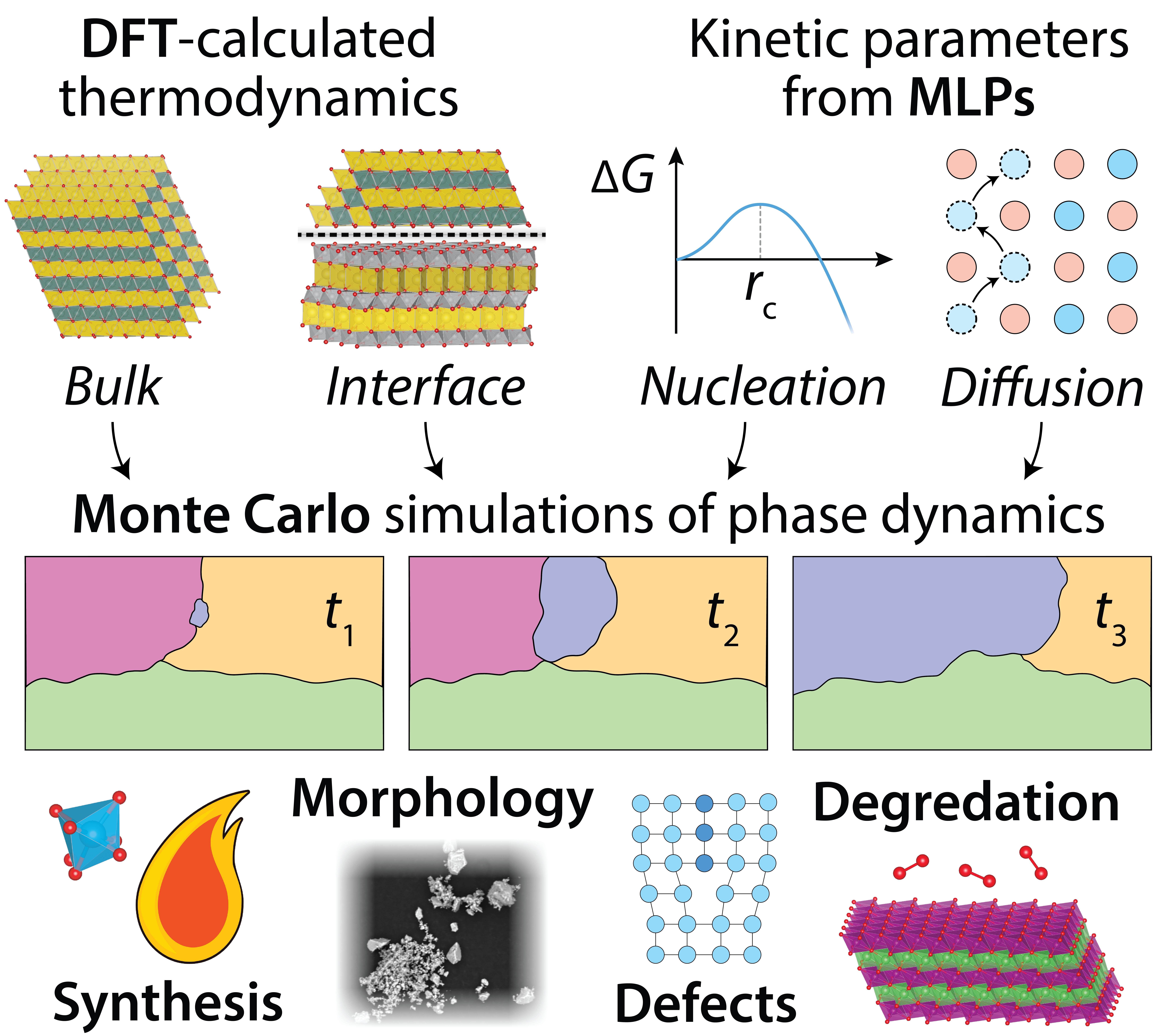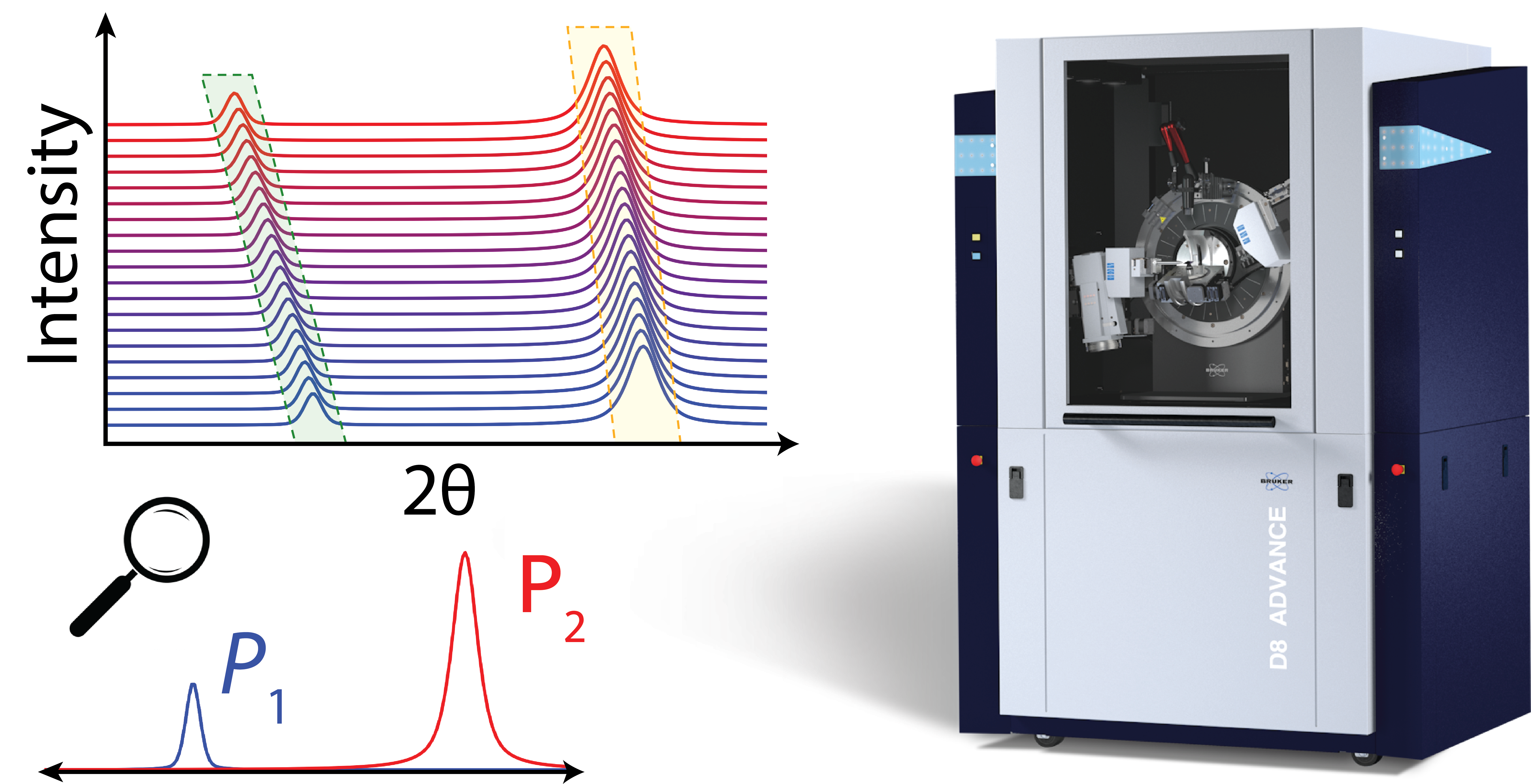Modeling Solid-State Phase Transformations
We develop computational frameworks to model solid-state reaction kinetics under realistic conditions. Combining density functional theory (DFT) calculations and machine learning potentials (MLPs) with kinetic Monte Carlo simulations, we go beyond thermodynamic predictions to understand how materials transform at the atomic scale.
Our approach accounts for diffusion, nucleation, and interface dynamics that determine synthesis outcomes and dictate material properties under operational conditions for energy technologies including Li-ion batteries, solid-oxide fuel cells, and green hydrogen production.

In-Situ Reaction Monitoring
In-situ X-ray diffraction (XRD) measurements performed at high temperature reveal how materials transform during synthesis and device operation.
We combine bespoke robotics with AI to automate the collection of in-situ XRD data in high throughput. These measurements directly validate computational predictions by revealing the hidden intermediates that often form in complex reaction pathways.

AI for Materials Characterization
We create ready-to-use AI tools to facilitate the analysis of characterization data from techniques including XRD, spectroscopy, and electron microscopy. These foundation models are pre-trained to enable rapid interpretation of experimental results without requiring extensive computational resources.
These tools are designed to work under non-standard conditions and with complex multi-phase systems, streamlining the characterization process.

Sustainable Materials Synthesis
We redesign synthesis routes for energy materials to minimize environmental impact while maintaining good performance. Using the tools described above, we optimize each step of manufacturing - from mineral extraction to device fabrication.
Our work primarily focuses on reducing energy consumption, CO2 emissions, and hazardous chemical use in the production of battery materials and related energy technologies.
